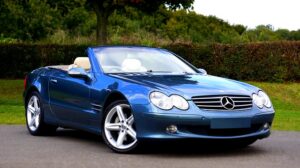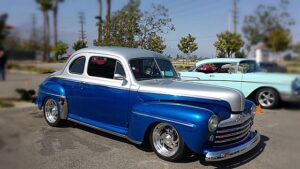Introduction
Changing the rear brake pads on a Harley Softail is an essential maintenance task that every motorcycle owner should know how to do. Brake pads wear down over time and need to be replaced to ensure optimal braking performance and safety. In this article, we will guide you through the step-by-step process of changing the rear brake pads on a Harley Softail.
Materials Needed
Before starting the brake pad replacement process, gather the following materials:
– New rear brake pads (specifically designed for your Harley Softail model)
– Socket wrench
– Allen wrench set
– C-clamp
– Brake cleaner
– Shop rags
– Torque wrench
– Brake fluid
Step 1: Preparation
To begin, park your Harley Softail on a level surface and engage the bike’s parking brake. Ensure that the engine is cool before proceeding. It is also recommended to wear protective gloves and eyewear during the process.
Step 2: Removing the Caliper
Start by removing the rear brake caliper. Locate the two bolts holding the caliper in place. Use an appropriate socket wrench or Allen wrench to loosen and remove these bolts. Gently slide the caliper off the brake rotor and set it aside, taking care not to damage the brake line.
Step 3: Removing the Old Brake Pads
Once the caliper is removed, you will have access to the old brake pads. Take note of their position and orientation for later reference. Use a C-clamp to compress the caliper piston back into its housing. This step is necessary to accommodate the thickness of the new brake pads.
With the piston compressed, remove the retaining clips or pins that secure the brake pads in place. Carefully slide out the old brake pads and inspect them for wear or damage. If necessary, clean the caliper and brake pad surfaces using brake cleaner and shop rags.
Step 4: Installing the New Brake Pads
Before installing the new brake pads, apply a thin layer of brake grease or anti-squeal compound to the back of each pad. This will help reduce noise and vibrations during braking. Insert the new brake pads into the caliper, ensuring they are properly aligned with the rotor.
Reinstall the retaining clips or pins to secure the brake pads in place. Double-check that the pads are seated correctly and have proper clearance with the rotor.
Step 5: Reattaching the Caliper
With the new brake pads installed, it’s time to reattach the caliper to the Softail. Slide the caliper back onto the brake rotor and align it with the mounting holes. Insert and tighten the caliper bolts using the appropriate wrench or socket. Be careful not to overtighten the bolts, as this can damage the caliper or brake rotor.
Step 6: Bleeding the Brakes
After the caliper is securely attached, it’s crucial to bleed the brake system to remove any air bubbles and ensure proper brake function. Start by locating the brake bleeder valve on the caliper. Attach a clear plastic tube to the valve and place the other end in a container to collect the brake fluid.
With the help of a friend, slowly pump the brake pedal or lever several times and hold it down. While the pedal or lever is held down, open the bleeder valve to release any air or fluid. Close the valve before releasing the pedal or lever. Repeat this process until no air bubbles are visible in the clear plastic tube.
Step 7: Checking Fluid Level and Torque
After bleeding the brakes, check the brake fluid level in the master cylinder reservoir. Top it up if necessary, using the recommended brake fluid for your Softail model.
Lastly, ensure that all bolts and fasteners are properly torqued to the manufacturer’s specifications. Use a torque wrench to tighten the caliper bolts and any other relevant components.
Conclusion
Changing the rear brake pads on a Harley Softail is a manageable task that can be done by motorcycle owners with basic mechanical skills. By following the step-by-step process outlined in this article, you can maintain the braking performance and safety of your Harley Softail.
Remember to always consult your motorcycle’s owner manual for specific instructions and torque specifications. If you are unsure or uncomfortable performing the brake pad replacement yourself, it is recommended to seek professional assistance.
References
– harley-davidson.com
– fixmyhog.com
– youtube.com













